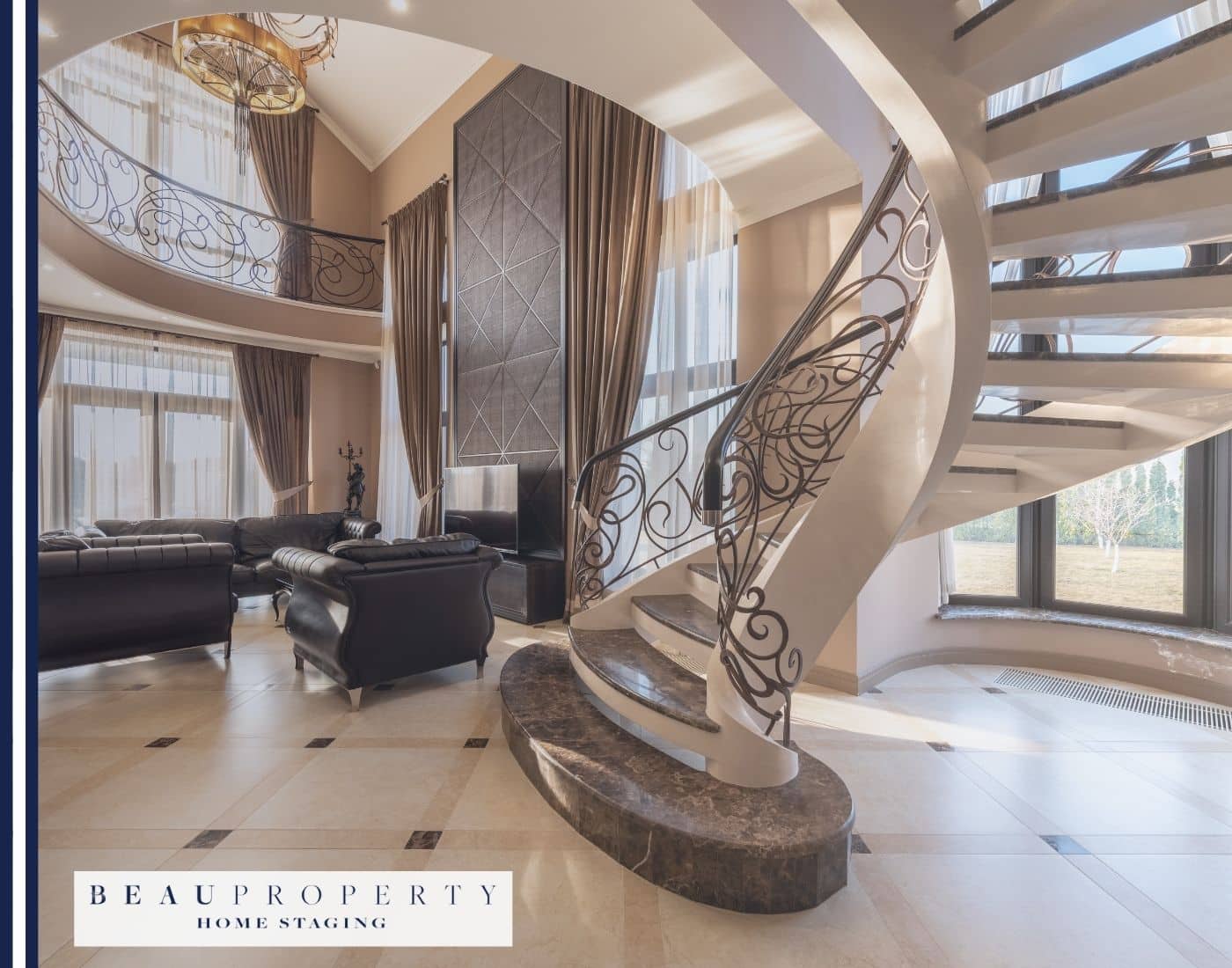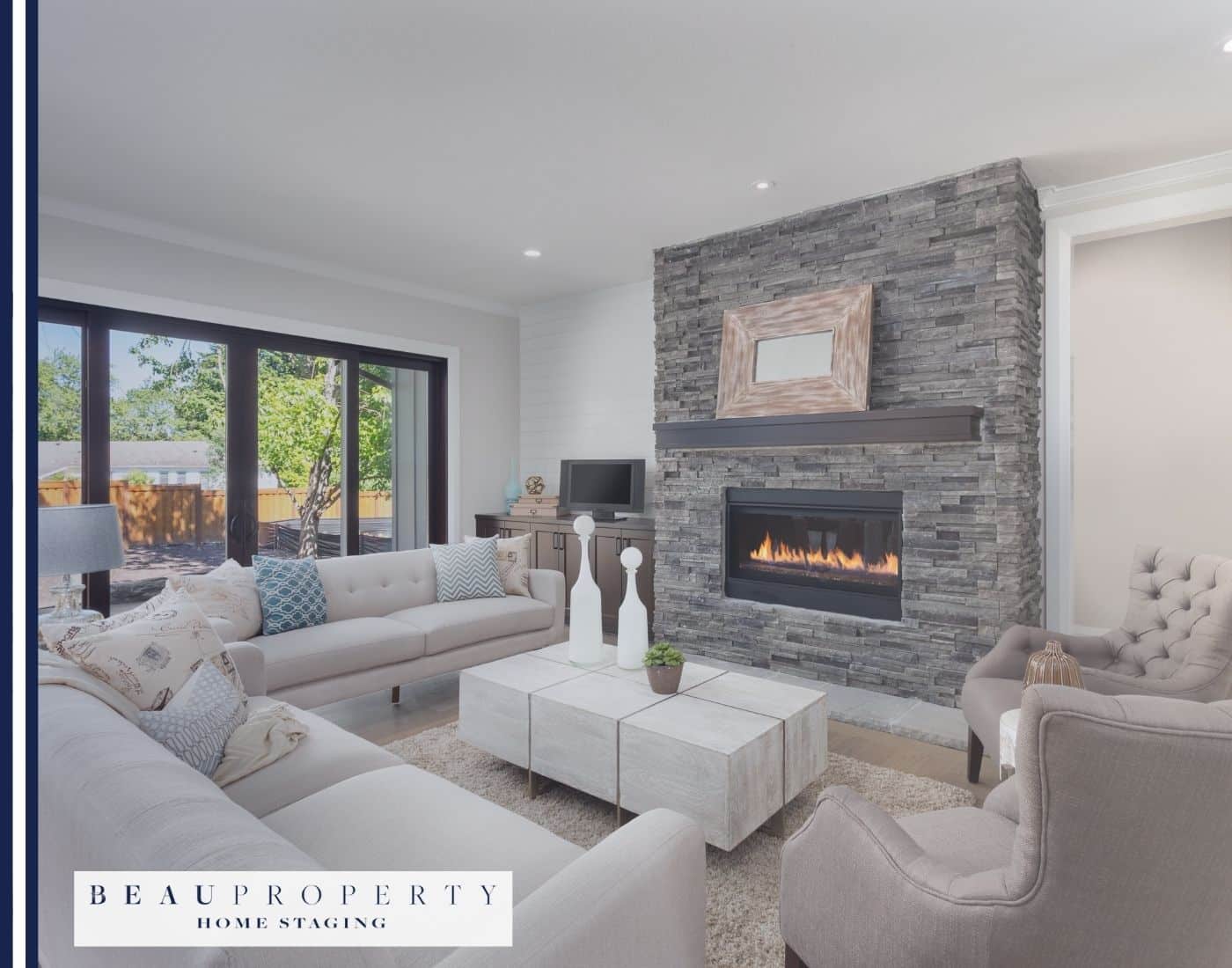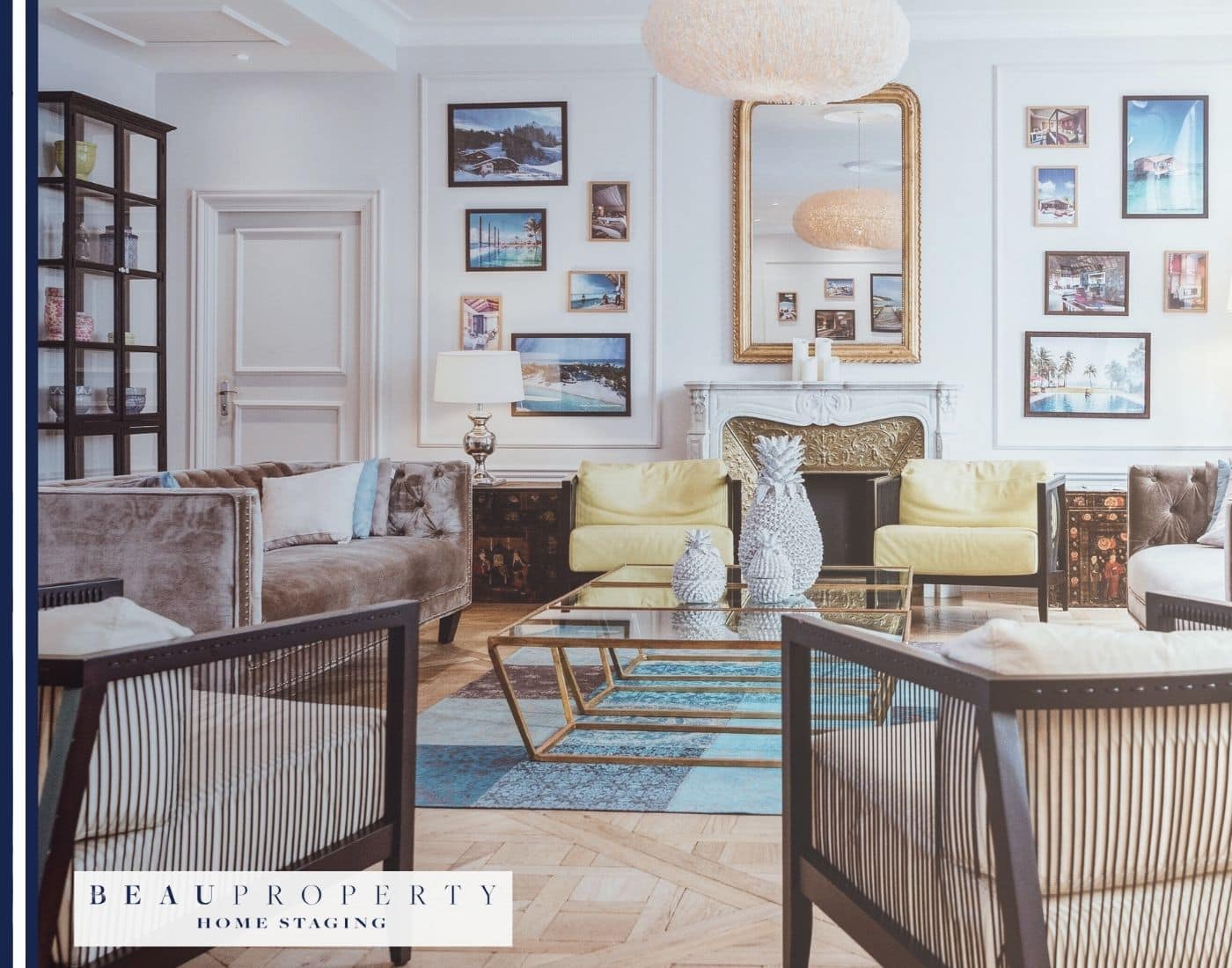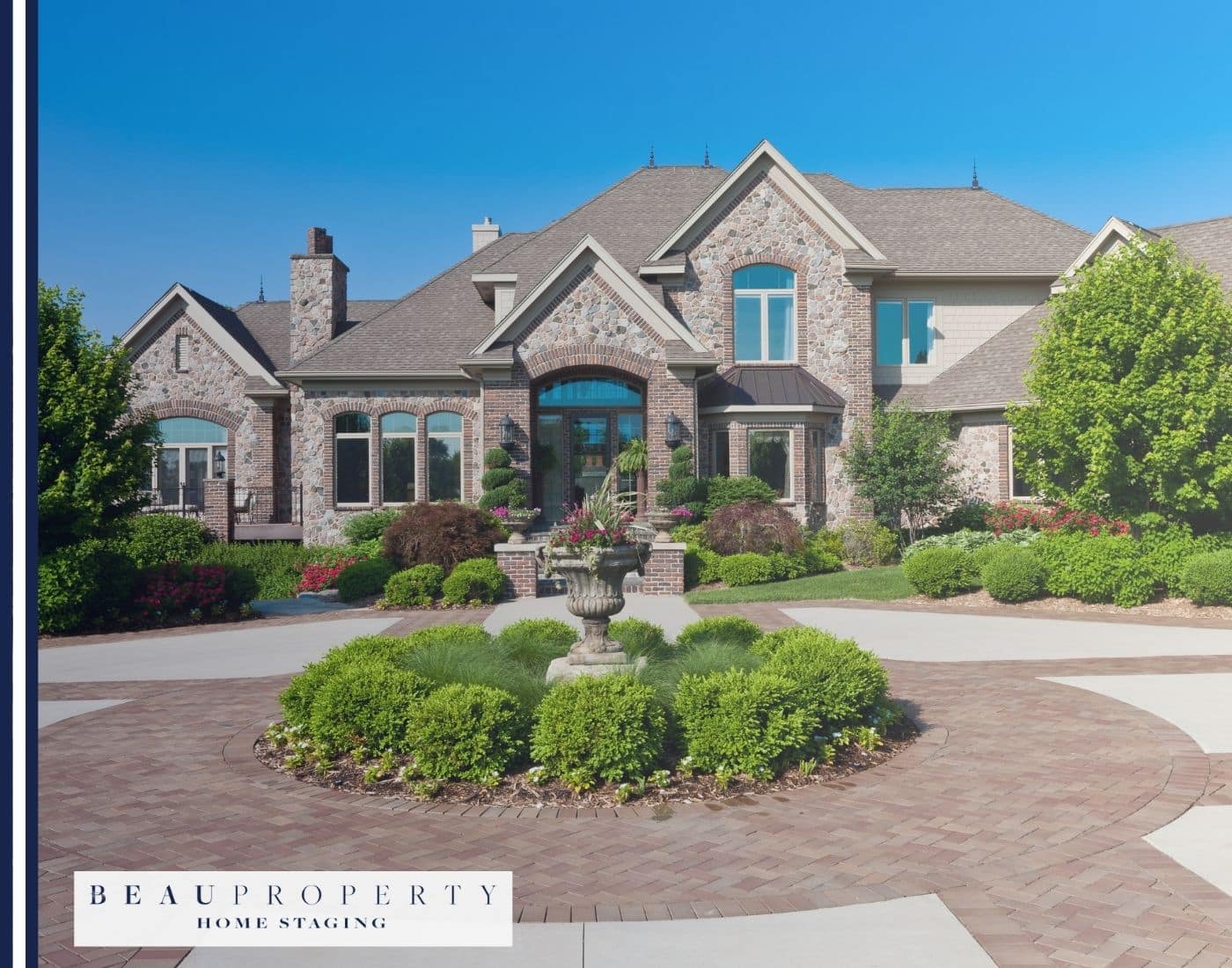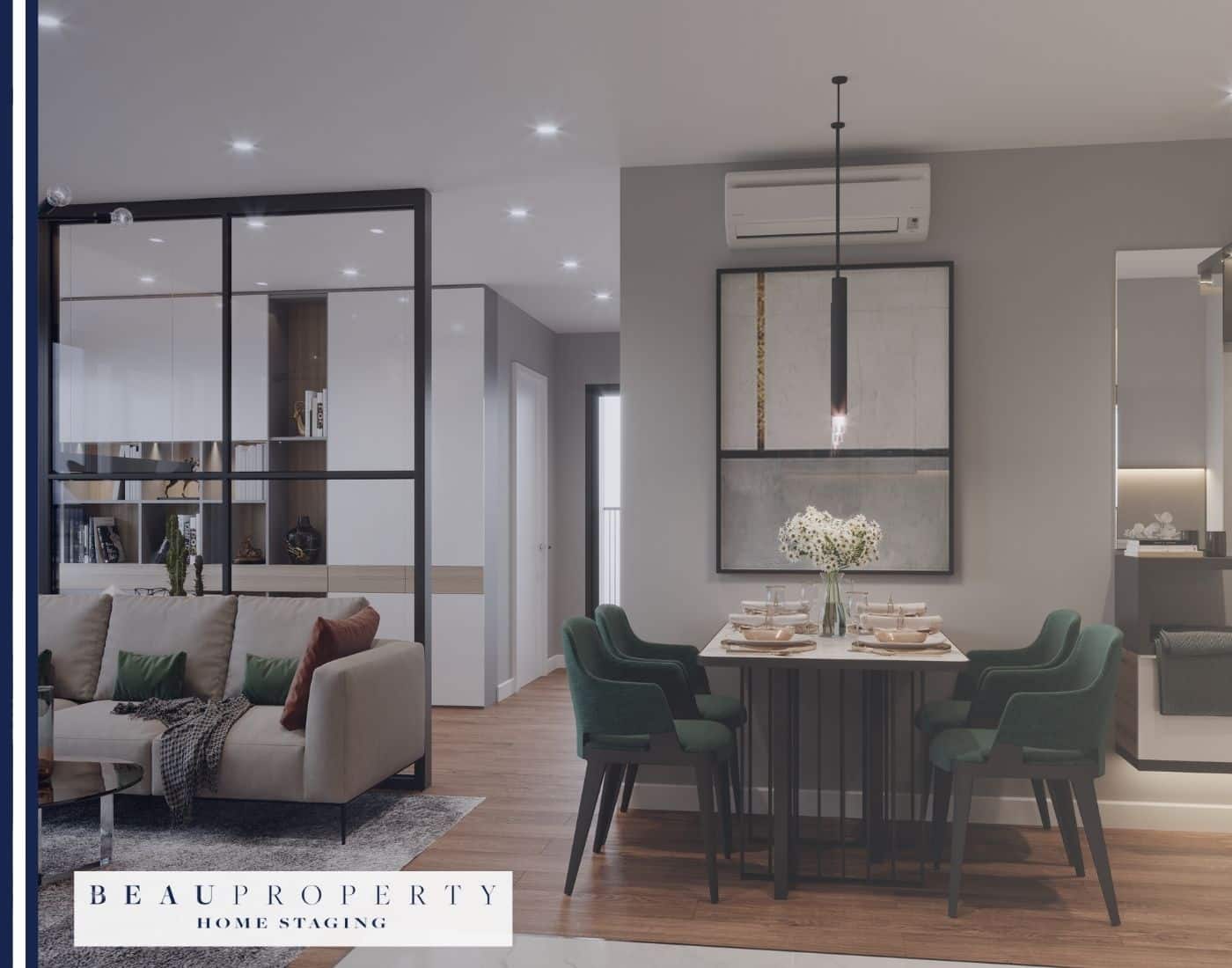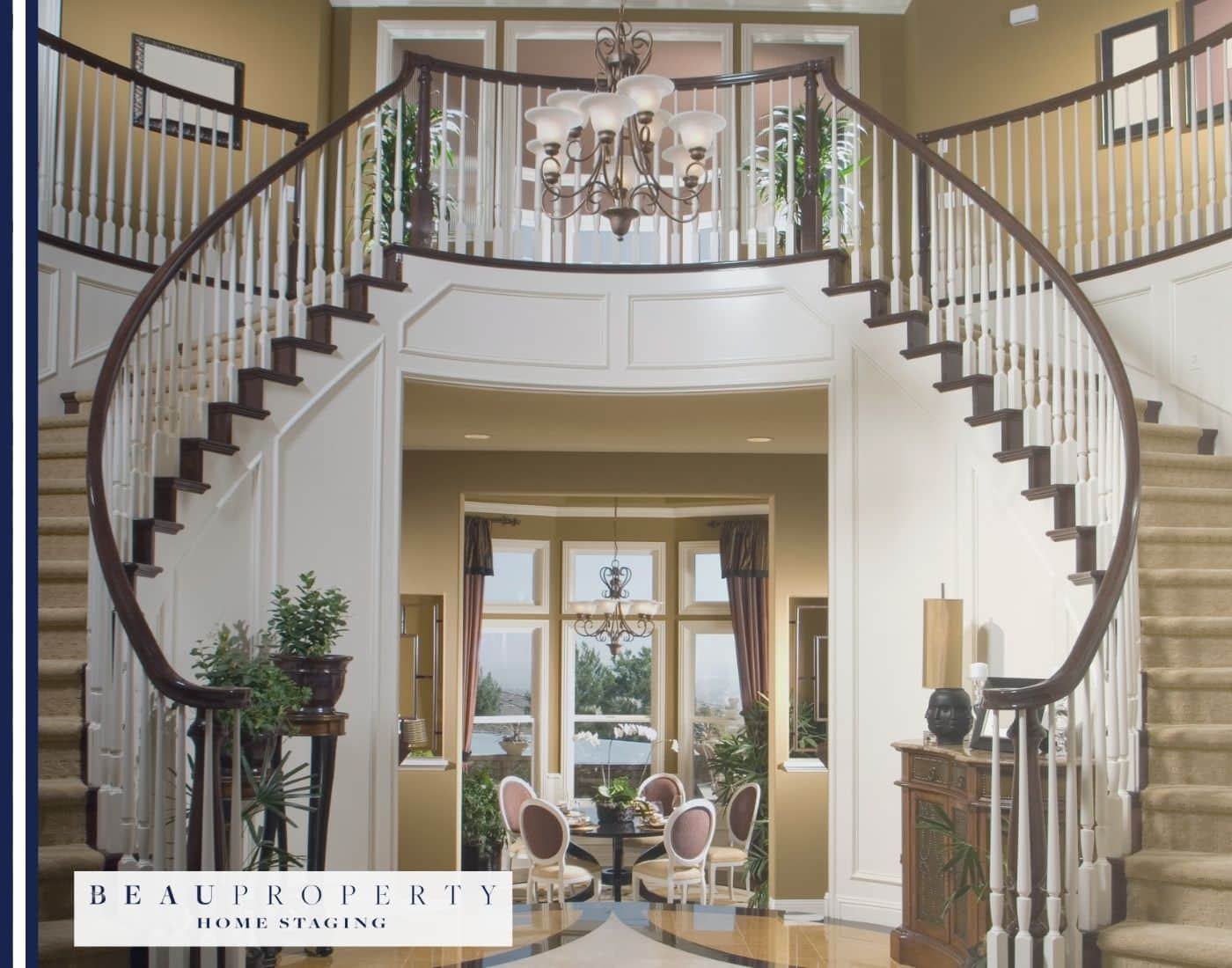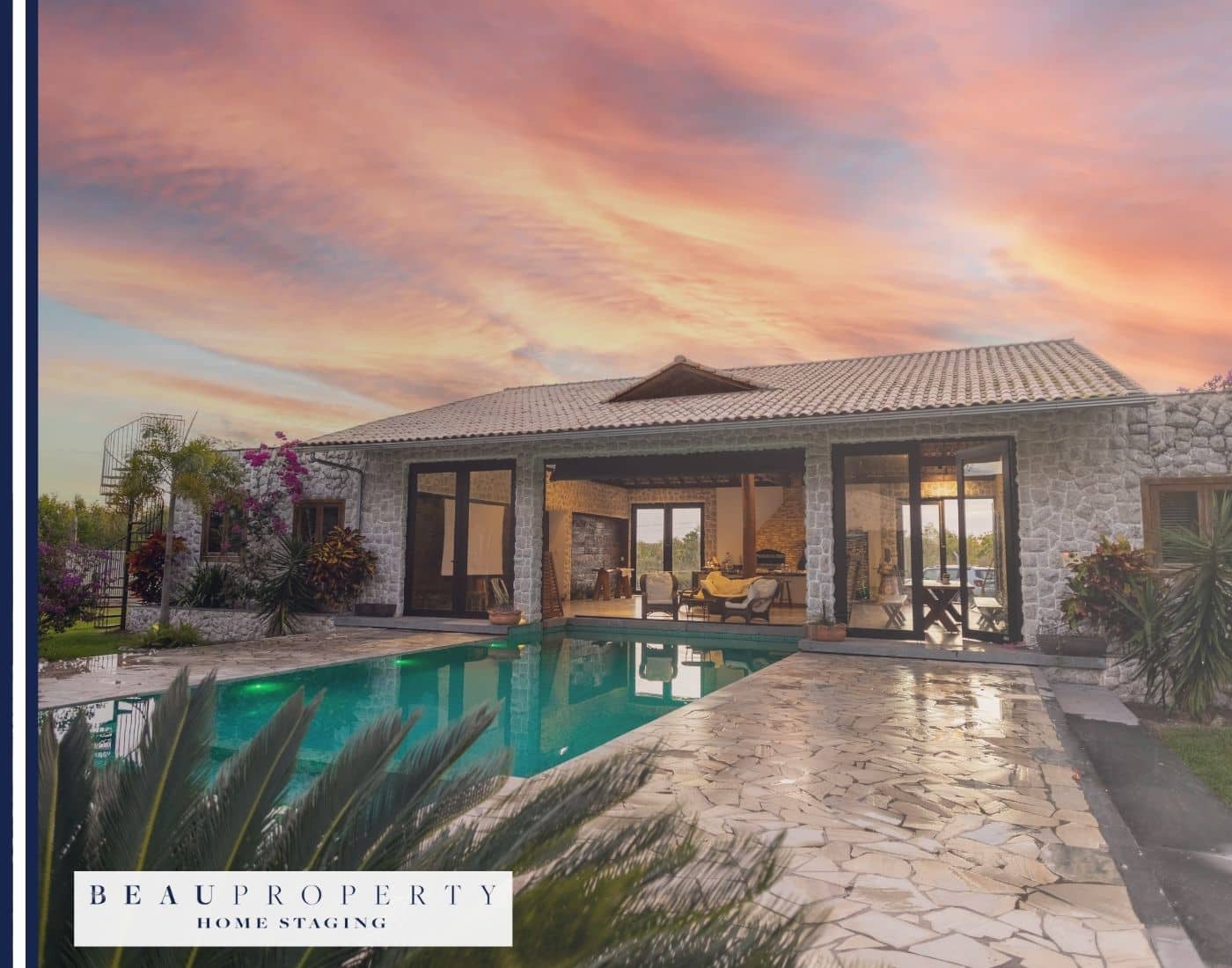Introduction to Luxury Home Staging in the UK Market
Defining Luxury Home Staging and Its Market Importance
Luxury home staging involves preparing a property for sale so that it appeals to the widest possible audience of potential buyers. In recent years, home staging has become a key strategy in the UK’s luxury property sector. The approach goes beyond simply tidying and decorating. It is about creating aspirational spaces that help buyers emotionally connect with a home and see its full potential.
The UK luxury property market is highly competitive. Buyers in this segment expect an elevated standard throughout the viewing process. Luxury staging responds to these demands by carefully designing interiors that highlight architectural features, maximise light and space, and foster a sense of exclusivity. A professionally staged luxury residence often spends less time on the market and can secure a higher sale price.
Distinction from Standard Staging
Luxury home staging differs significantly from conventional staging. While standard staging aims to make a property appealing to as many people as possible, luxury staging is more bespoke. It draws on premium furnishings, artwork, and finishes to reflect the home’s value and target high-net-worth individuals. Attention is paid to the smallest details, such as tactile materials, curated accessories, and custom pieces. This ensures a seamless and sophisticated experience that resonates with the expectations of discerning buyers.
Luxury staging requires a deep understanding of both design trends and the target market. The emphasis is on quality over quantity, with each design decision tailored to highlight the unique features and character of the home. This bespoke approach makes luxury staging a distinct discipline within the broader field of property presentation.
Creating First Impressions: The 3-Foot 5-Foot Rule
The Power of Immediate Visual Impact
First impressions significantly influence a buyer’s interest, particularly in the luxury market. In luxury home staging, both the micro and macro visual elements need attention. The 3-foot and 5-foot rule is essential for guiding this process. At three feet, viewers notice fine details, texture of fabrics, finish of wood, and the gleam of fixtures. These close-up elements convey quality and careful maintenance, encouraging confidence in the property’s value.
Highlighting Quality and Detail at the 3-Foot Level
When a potential buyer stands within three feet, their focus shifts to craftsmanship and finish. Immaculate surfaces, expertly placed accessories, and seamless transitions between materials are vital. Touchpoints such as handles, tapware, and textiles should speak to luxury through their appearance and tactile feel. Any flaw becomes quickly apparent, so meticulous staging at this range builds trust.
Spatial Flow and Grandeur in the 5-Foot Perspective
Stepping back to five feet allows the eye to take in the space as a whole. Here, the goal is to create a harmonious flow and reveal the property’s true scale. The arrangement of furnishings should lead the gaze naturally through rooms, highlighting architectural features like fireplaces, floor-to-ceiling windows, or unique ceiling details. Symmetry, clear walkways, and purposeful focal points draw the buyer’s attention, making rooms feel both spacious and welcoming.
Luxury home staging, when approached with this dual focus, ensures both detail and grand design are showcased. This careful attention continues throughout the home, setting an elevated standard that resonates with discerning buyers.
Luxury Furnishings and High-End Materials
Investing in Premium Furnishings
Selecting the right furnishings is essential in staging high-value homes. Premium furniture should reflect the quality expected at the property’s price point. Well-chosen pieces present the property as move-in ready and align with buyer expectations within the luxury market. Investing in higher quality items helps create an environment full of comfort and elegance, increasing the property’s overall appeal and perceived value.
Quality Materials and Tangible Luxury
Materials and textures matter just as much as design. Luxurious fabrics, solid hardwoods, and polished stone are all powerful cues of sophistication. When prospective buyers experience these quality details up close, it reinforces a sense of exclusivity and long-lasting value. The tactile experience provided by rich upholstery, marble, or bespoke finishes makes the impression of luxury tangible, which buyers appreciate in premium properties.
The Strategic Use of Designer Pieces
Introducing signature designer furniture and statement accessories further elevates the perceived worth of the home. These pieces often serve as conversation starters and can create memorable focal points within a room. By placing them strategically, the staging design highlights spatial strengths and desirable features, supporting the property’s premium positioning.
Art and Accessories: Setting the Tone
Curated Collections for Sophisticated Ambiance
Carefully selected art collections define the mood and style of a luxury property. Curated pieces introduce elegance and set an unmistakable tone, projecting refinement and exclusivity. Art transforms neutral, understated rooms into inviting spaces with character, while reflecting both timeless style and contemporary taste. The right selection (whether classic paintings, modern photography, or sculptural works) should create a sense of cohesion, acting as visual anchors that elevate the interior environment.
The Power of Statement Pieces
Statement accessories are central in luxury staging. A striking chandelier, an ornate mirror, or a bold piece of designer furniture can serve as a focal point, capturing attention the moment a client steps into a room. Each item should serve a clear purpose, enhancing both flow and aesthetic value rather than merely filling empty space. These statement pieces, when placed thoughtfully, add layers of personality and grandeur, allowing the property to stand apart and be memorable to prospective buyers.
Balancing Minimalism with Luxe Accents
Luxury staging relies on a delicate balance between simplicity and opulence. Rooms should avoid clutter, instead offering clean lines and open space complemented by a few high-impact accents. Minimalism here does not mean emptiness, rather, it means restraint, giving each luxury accessory or artwork room to breathe. High-quality textiles, vibrant cushions, or hand-blown glass objects can inject warmth and interest without overwhelming the senses. Subtle pops of colour or unique decorative items bring invitations of comfort and distinction, encouraging buyers to envision a sophisticated yet welcoming lifestyle.
Lighting Design for Luxury Properties
Elevating Architecture and Ambiance
Lighting plays a crucial role in luxury home staging. Professional lighting design enhances key architectural features, drawing attention to details like decorative mouldings, wall textures, or sculptural elements. Thoughtfully planned lighting can bring out the quality of finishes and materials, heightening a property’s sense of opulence.
Lighting is also essential for creating ambiance. In luxury homes, a carefully chosen lighting scheme allows each room to feel inviting and sophisticated. Mood can shift from bright and energising during the day to warm and intimate at night, depending on the selection and placement of light sources. The right lighting fosters a sense of comfort that resonates with discerning buyers.
Importance of Layered Lighting
Layered lighting is fundamental in luxury staging. This approach combines three types of light: ambient (general), accent (highlighting features), and task (focused areas).
- Ambient lighting sets the overall tone and ensures even illumination.
- Accent lighting, such as wall sconces or art spotlights, draws attention to artworks or special architectural elements.
- Task lighting (like reading lamps or under-cabinet strips) serves practical needs while complementing the aesthetic.
Together, these layers add visual depth, eliminate harsh shadows, and generate a dynamic environment appropriate for high-end listings.
Synchronising Natural and Artificial Light
Luxury properties benefit from a seamless integration of natural and artificial light. Maximising daylight creates an airy, open feel that enhances finishes and makes spaces appear larger. Tactics include using mirrors to bounce light, choosing light-toned furniture, and strategically painting walls and ceilings to amplify brightness.
When natural light is insufficient, high-quality artificial lighting ensures consistency and drama. Ceiling fixtures, table lamps, and LED strips can be layered to add dimension, while smart lighting technology allows effortless control of mood and intensity. The result is a sophisticated atmosphere that consistently flatters the home, whatever the hour or weather.
Optimising Digital Presentation for Luxury Buyers
The Power of Professional Photography
Professional photography is indispensable when showcasing luxury properties. High-quality images accentuate key architectural features, premium finishes, and grand spaces, ensuring each room is presented at its best. Well-executed photographs create strong emotional connections, encouraging prospective buyers to envision themselves within the home. In the luxury sector, where presentation quality is expected, crisp professional imagery distinctly separates premium listings from the ordinary. This visual impact not only builds desirability but also captures the viewer’s attention in competitive digital markets.
Virtual Tours and Digital Marketing Innovation
Moving beyond photography, luxury marketing now leverages immersive virtual tours and sophisticated online strategies. 3D virtual tours allow buyers to explore properties remotely, offering a detailed sense of flow and space at their own pace. This accessibility is crucial for international or time-poor buyers and creates sustained engagement with the property listing. Integrating these digital tools into a broader marketing strategy (alongside targeted advertising and content) demonstrates innovation and sets a luxury property apart in the market.
Tailoring Staging to Target Luxury Demographics
Understanding High-Net-Worth Buyer Expectations
High-net-worth buyers in the luxury market have refined tastes and specific priorities. They expect homes to feature prime locations, architectural excellence, smart home integration, impressive amenities, and above all, exclusive privacy. Staging should spotlight these qualities, ensuring that every element reinforces the home’s sense of prestige and potential for a bespoke lifestyle. Homes that embody these features through thoughtful design and superior execution are far more likely to attract serious interest from affluent purchasers.
Researching and Appealing to International Buyers
Today’s luxury buyers frequently span international markets. To appeal broadly, staging should respect global standards of luxury while subtly reflecting cultural values when relevant. Research into buyer demographics provides an edge. Incorporating universally appealing, high-quality finishes and neutral, elegant palettes ensures broad resonance. For example, Asian buyers may value feng shui-influenced layouts, while Middle Eastern clients may prefer subtle gold accents or discreet prayer spaces. Understanding these nuances helps a property captivate buyers from across the globe.
Creating Lifestyle Vignettes for Aspiration
Luxury staging excels when it creates powerful lifestyle vignettes, carefully arranged scenes that evoke aspirational living. A terrace set for al fresco dining, a reading nook beside a marble fireplace, or a wine lounge with curated glassware allows buyers to imagine extraordinary everyday experiences. These vignettes move beyond generic presentation, subtly guiding buyers to see not just a house, but their ideal future home. Staging with this focus draws an emotional response, fostering a genuine connection with the property.
Enhancing Outdoor Spaces and Amenities
Strategic Staging of Gardens, Terraces, and Entertainment Areas
Carefully staged outdoor spaces are crucial in luxury home presentation. Gardens benefit from neat, well-maintained planting schemes and subtle focal features such as water elements or sculptural displays. Patios and terraces should be dressed with high-quality outdoor furniture, soft furnishings in neutral palettes, and accessories like lanterns or fire pits to create a welcoming yet sophisticated retreat. Defined relaxation and dining areas help buyers picture effortless entertaining.
Highlighting Unique Outdoor Features
Every luxury property often offers distinct features, such as a heated pool, rooftop terrace, or heritage landscaping. These should be thoughtfully presented. For example, a pool might be framed by elegant loungers and fresh towels, while garden pathways can be subtly highlighted with lighting to draw attention during twilight viewings. This subtlety elevates these assets, making them focal points of aspirational living.
Creating Seamless Indoor-Outdoor Flow
For many luxury buyers, outdoor space is a direct extension of interior lifestyle. To achieve this, it is essential to maintain visual and practical continuity between indoor and outdoor areas. Use complementary design palettes and matching textures, think timber decking that echoes indoor flooring or planters that coordinate with interior finishes. Large bi-fold or sliding doors, if present, should be left open during viewings to blur boundaries, emphasising space and light.
Luxury Staging for Specific Property Types
Tailoring to Property Character
Every luxury property is unique, and staging must highlight its strengths while addressing its specific audience. Period homes, like Georgian townhouses or Victorian terraces, benefit from staging that respects original features (ornate fireplaces, ceiling roses, or sash windows) while adding refined, contemporary touches. Subtle layering with antique accessories and soft, neutral colours preserves historic character and makes spaces feel inviting.
Modern luxury homes, such as those with open-plan layouts and floor-to-ceiling glazing, require a different approach. Minimal, streamlined furniture and striking art pieces help emphasise clean lines and spaciousness. Choosing materials like polished concrete, glass, and fine woods reinforces contemporary elegance.
Staging for Estates and Penthouses
Country estates need staging that brings grandeur to life yet feels livable. Rich textures, large statement furnishings, and bespoke accessories highlight scale and luxury. It’s important to draw attention to standout features (beamed ceilings, sweeping staircases, or stone hearths) while ensuring each space feels cohesive.
Urban penthouses, on the other hand, call for understated sophistication. Designer furniture, bold lighting, and art focused around city views are ideal. Outdoor terraces should be presented as extensions of indoor living, maximising every inch of valuable space.
Selecting the Right Luxury Home Staging Professional
Importance of Certification and Accreditation
Selecting a luxury home staging professional starts with their credentials. Working with certified and accredited stagers ensures you receive expertise tailored for high-value properties. Professionals such as Beau Property Staging are members of industry organisations. These organisations, like the Home Staging Association UK, uphold strict standards by providing training, resources, and accreditation. This gives sellers confidence that staging is carried out with current best practices and professional ethics at its core.
Assessing Portfolios and Past Experience
Evaluating a stager’s portfolio is key. Review examples of previous projects, paying special attention to properties similar to yours, be it period homes, penthouses, or country estates. This allows you to gauge whether the professional can enhance homes at your price point and understands the subtle demands of luxury selling. Testimonials and detailed case studies, like those highlighted by Beau Property Staging, often indicate both versatility and success across property types.
Role of Professional Standards
The Home Staging Association UK fosters industry best practices by certifying stagers and providing continuous professional development. Certified members are recognised for operating with integrity and quality, offering reassurance to both sellers and agents. This ensures the staging process will not only meet expectations but also add measurable value to luxury listing.
Timing Considerations for Maximum Impact
Strategic Timing Before Marketing Launch
Timing is critical when preparing a luxury property for sale. Staging should be completed well before the marketing launch. This ensures the property is at its best for initial viewings, which are often the most influential. Early staging also allows estate agents and marketing teams to use the newly styled interiors as a foundation for their campaigns. A fully staged property attracts buyers more quickly and reduces time on the market.
Seasonal Factors for the UK Market
The UK’s changing seasons can heavily influence buyer perception. Spring and early summer tend to generate the highest interest, with more natural light and gardens in full bloom. During these times, staging can highlight outdoor spaces and maximise curb appeal. In autumn and winter, focus should shift indoors, using layered lighting and warm textures to create inviting atmospheres. Recognising these seasonal patterns enables sellers to tailor presentation and maximise appeal throughout the year.
Coordinating Staging with Photography and Marketing
To capture the strongest first impression online, professional photography should be scheduled immediately after staging is complete. This guarantees that every detail is showcased at its peak, furniture layouts, floral displays, and finishing touches remain immaculate. Proper coordination between stagers, photographers, and marketing teams streamlines the sales process and reduces opportunities for visual inconsistencies.
Decluttering and Depersonalising: The Luxury Approach
Creating a Neutral Yet Aspirational Canvas
Luxury home staging requires the home to act as an inviting canvas. Removing personal photos, monogrammed items, and family memorabilia allows buyers to picture themselves living there. However, the space must remain warm, not sterile. Replace personal decor with well-chosen, neutral artwork and elegant accessories. The aim is to craft an environment that feels like a refined retreat, encouraging an emotional connection without a sense of intrusion.
Maintaining Character While Removing Personal Elements
Simply stripping a home of personal items can risk making it soulless. Luxury staging addresses this by preserving select architectural features or design details while decluttering surfaces and shelving. In this way, the home’s unique character shines through, but without distractions that could limit broad appeal. Subtle statement pieces, such as a carefully selected vase or sculpture, add back a sense of identity while remaining universally attractive.
Striking the Balance: Minimalism with Warmth
A successful approach to decluttering in luxury spaces is “warm minimalism”. This means streamlined furniture arrangements, clear surfaces, and open layouts, but enriched with soft textiles, layered lighting, and natural textures. Neutral palettes (like beiges, creams, and soft earthy tones) invite comfort and light. Layering different materials, such as wood, stone, and plush fabrics, achieves a sense of understated opulence and warmth that appeals to today’s high-end buyers.
Technology Integration in Luxury Home Staging
Showcasing Smart Home Features and Integrated Technology
Modern luxury buyers expect advanced technology as standard in high-end properties. Staging should highlight smart lighting, automated climate control, and state-of-the-art security. For example, voice-activated assistants can be set up to demonstrate hands-free controls, while built-in speakers or tech hubs should be visible yet seamlessly integrated to preserve clean lines. Showcasing these features helps buyers appreciate the property’s modern conveniences and reassures them it is future-ready.
Enhancing the Viewing Experience with Technology
Immersive tools like virtual reality (VR) and augmented reality (AR) are transforming how luxury homes are showcased. VR offers complete property walkthroughs, allowing buyers to experience the flow and layout without stepping inside. AR can enhance physical visits by overlaying digital elements to help buyers visualise the space’s full potential. These technologies make the viewing process both interactive and memorable, which is especially valuable for overseas or remote clients.
Highlighting Energy Efficiency and Sustainability
Demonstrating advanced eco-friendly features is increasingly important in luxury staging. Showcasing solar panels, air filtration, and energy-efficient appliances signals the property’s commitment to sustainability. Staging should position these elements as aspirational features that align with the values of discerning buyers seeking responsible luxury.
The Psychology of Luxury Home Buyers
Emotional Drivers in Luxury Purchases
Luxury home buyers are not simply motivated by practical needs. For high-net-worth individuals, the acquisition of an upscale property is deeply emotional. The feeling of exclusivity, status, and a sense of achievement can be significant drivers. Unlike standard home purchases, luxury buyers are often driven by aspiration, the desire to own something unique that mirrors their personal success or lifestyle aspirations. Scarcity also plays a role; the fear of missing an exceptional opportunity can be a powerful motivator among affluent buyers.
Creating Aspirational Environments
Home staging in the luxury market focuses on sparking these emotions from the very first step inside. Carefully chosen furnishings, tailored lighting, and elegant details create an environment that feels both luxurious and welcoming. This curated atmosphere is essential not just for style, but for enabling buyers to picture themselves living a prestigious lifestyle there. Statement art and accessories evoke stories and elevate the ambiance, all working to instil a sense of having “arrived”.
Luxury Staging vs Low-Cost Alternatives
Comparing Quality and Impact
Luxury staging stands apart from budget options due to the calibre of materials, furnishings, and overall aesthetic. High-end staging employs designer pieces and offers tailored arrangements that capture the aspirations of affluent buyers. The attention to detail creates an emotional connection, enhancing the perceived value of the property. Properties staged to luxury standards often sell for 5–10% more than unstaged homes, and can fetch up to 17% above the asking price when executed professionally.
By contrast, low-cost alternatives typically use more basic furnishings and limit customisation. While even basic staging can help improve sale speed, the lack of premium touches may not resonate with high-net-worth buyers. The risk is that luxury properties may appear less impressive, reducing their appeal and potential sale price.
When High-End Staging Delivers Returns
Investing in luxury staging is most effective for properties at the upper end of the market, where buyers expect a certain standard. Sellers can typically expect a significant return on investment, with some homes seeing a return of 5–15% above asking price. Customisation and high-quality materials are especially valuable in competitive markets, helping homes stand out.
Risks of Underspending
Cutting corners with budget staging carries real risks for premium properties. Inferior quality furnishings can make a property look less desirable, resulting in fewer viewings and longer time on the market. There is also the danger of not appealing to the right demographic, which can hinder interest and lead to price reductions.
Conclusion: Maximising Returns Through Strategic Luxury Staging
Key Benefits of Professional Luxury Staging
Investing in professional staging for premium properties delivers significant advantages. Staged luxury homes consistently achieve higher selling prices and spend less time on the market compared to their unstaged counterparts. Enhanced first impressions, better online presentation, and emotional resonance with affluent buyers drive these superior outcomes.
Actionable Recommendations for Sellers
Luxury property sellers should approach staging methodically:
- Begin by decluttering and depersonalising key spaces to create a versatile and aspirational canvas.
- Prioritise high-quality furnishings, accessories, and lighting to reflect the home’s value.
- Invest in professional photography and consider virtual tours to extend reach and appeal.
- Consult with experienced luxury home stagers for tailored solutions and expertise.
- Make minor repairs and finish updates that elevate the perception of move-in readiness and quality.

